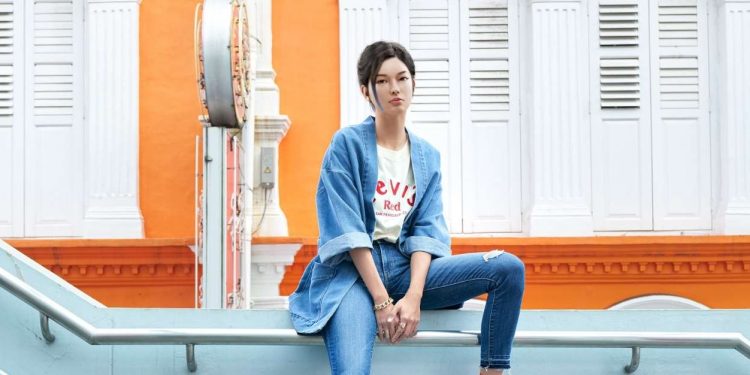At first glance, Rae (@here.is.rae) looks just like any other girl on Instagram: decked in streetwear, posing casually with her girl squad, exuding confidence and power.
It takes a second – perhaps even a third – glance to realise that she is not real, cunningly given away by the accompanying hashtags #virtual, #CGI and #AI. For Rae is a virtual influencer, part of the next generation of influencers disrupting the marketing landscape.
Defined as “fictional computer-generated influencers who have the characteristics and personalities of human influencers”, virtual influencers are an up-and-coming trend in the influencer industry, a digital phenomenon created using CGI technology that is powered by AI.
But what lies behind their popularity?
Why Brands Are Choosing to Work with Virtual Influencers
Virtual influencers are able to fill the unique niche in the market of providing lasting relatability. Human influencers depend on carefully curated profiles and behaviours that can eventually unravel, as the work that goes on behind their profiles are often not accurate depictions of reality.
Virtual influencers, on the other hand, do not face equal potential for backlash, nor the same fallout that invariably follows a human influencer’s “exposé” when the lengths to which they resort to for the purpose of maintaining their online presence is revealed. With AI influencers, there are no bad hair days – every strand will always be in place.
The potential for collaboration and creative liberty is astonishing: being unbound by the constraints faced by their human counterparts, virtual influencers offer the ability to literally be anywhere at any time. Factors such as geographical limitations and physical fatigue are no longer an issue, as virtual influencers have the capacity to work 24/7. As Rae puts it, one of the best parts of being a virtual being is “the possibilities of being anywhere I want or doing anything I can imagine”.
Virtual influencers are taking over the global marketing landscape as well. Lil Miquela, the first virtual influencer to gain international recognition with a massive global following, reps athleisure and red carpet-worthy looks with equal ease; clips of her singing are disturbingly realistic.
Renowned brands such as KFC and Puma have also embraced the trend, with KFC releasing a reinterpretation of Colonel Sanders – featuring toned muscles, hipster glasses and slicked back silver hair – and Puma rolling out Maya, touted as “your average not so average Southeast Asian Virtual Girl”. Here we see the reworked Colonel in a sanitised version of reality, drinking Dr Pepper with a pensive air and posing by a plane, but also posing with his team in the restaurant. It’s an ingenious way to lend these brands a refreshing air of relatability, with just a touch of aspiration.
Risk & Predictability
Brands now have the unprecedented opportunity to mould an influencer to truly fit their tastes – one that is in perfect alignment with their brand values. Less risk is also involved with virtual influencers: companies will never have to worry about the repercussions of them releasing tone-deaf content or being embroiled in scandals, and how these actions will impact their brand image.
This has led to an influx of brands being more willing to partner up with virtual influencers. For Rae, collaborations with celebrated style icons have been aplenty, with her recent photoshoot with VaVa, dubbed as China’s Queen of Rap, being one such experience.
Local designers have also jumped on the bandwagon, with renowned sneaker designer Mark Ong (@mr.sabotage) releasing a drop called the SBTGxRae capsule collection in collaboration with Rae, which was sold out within three days.
Virtual influencers allow their fans to live vicariously through their experiences; a day at the office feels a tad less mundane when one looks at Rae’s feed, populated by shots of her adventures on skateboards and around Singapore’s streets, and clips of her escapades at Chinatown on Instagram Stories.
Rae’s captions belie a clever consciousness of her audience, carefully crafted to endear and appeal with relatable content that seek audience engagement in a way that feels authentic (“swipe to see how fluffy it really is”).
Virtual influencers are also able to deliver on personality: when asked about her opinion on the anti-vaccine movement, Rae cheekily responds with virtual influencers having “other types of viruses to contend with”.
A Reflection of Desires
I believe that virtual influencers can’t replace human ones, but still form and will continue to be an integral part of the influencer landscape.
While they provide greater convenience – especially in the current COVID-19 climate, where movement and travel is restricted – and versatility, virtual influencers are still unable to capture the essence of humanity: the flaws and struggles that underpin our lives.
They may not be able to bring the same level of candour and mess that makes influencers human and fundamentally relatable, but they stand as a reflection of the values we look to and treasure – and as a form of escapism too.
Virtual influencers reflect key human desires – the want to be seen and accepted; the need to feel connected; the need for impact, to matter, and to have a presence that is felt, with the bonus of perfect skin.
And if that fulfils what their fans are looking for, isn’t it enough?
Join the conversations on THG’s Facebook and Instagram, and get the latest updates via Telegram.













